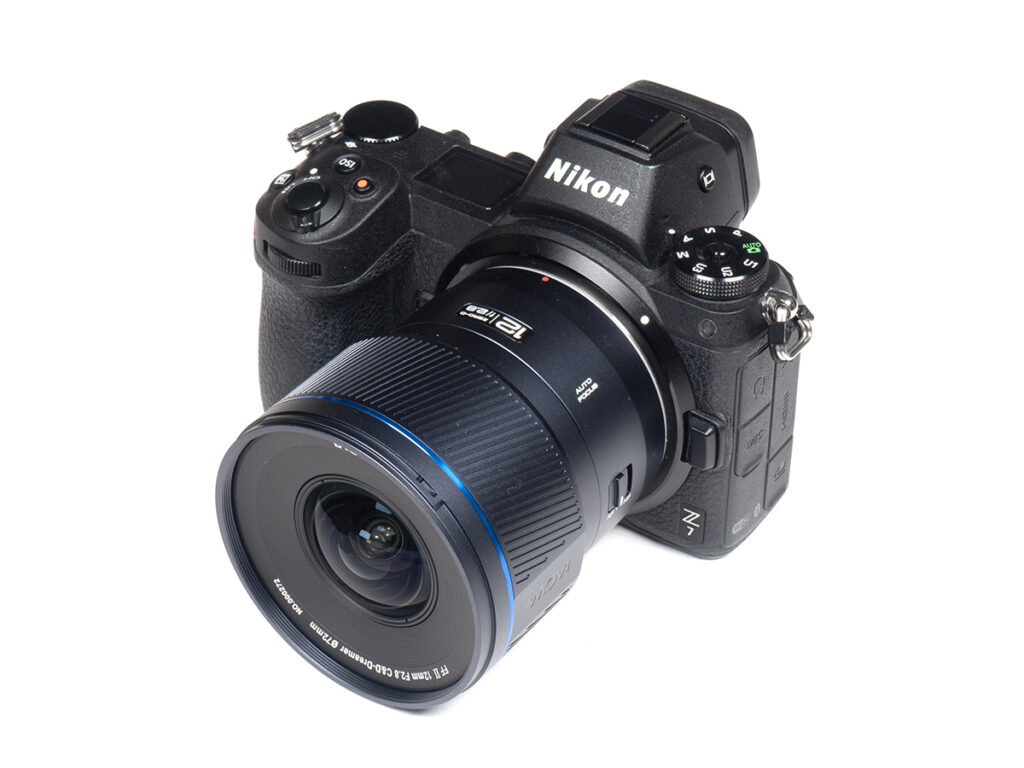Laowa is a master of extreme and/or unusual lens designs. The new Laowa AF 12mm f/2.8 FF II Zero-D is one of them. It’s basically a more sane variant of their 10mm f/2.8. We’ve seen a few ultra-wide zoom lenses this wide (in Sony E- and Canon RF mount at least) but these are ginormous beasts, whereas Laowa managed to deliver a pretty compact and light-weight lens here. And it’s not completely out of reach for most mortals at a price of $699USD. The AF version is available in Sony E- and Nikon Z-mount, whereas manual-only versions are also available in Canon RF and L-mount. This review is about the Z-mount AF version.
Laowa has settled for a new design language with their AF lenses. The all-metal housing has a gunmetal color scheme. It’s quite attractive actually (well, in my book anyway) although this doesn’t match with the plain black of your camera. The broad (metal-) focus ring has a nice texture to it and turns smoothly. A metal lens hood is part of the package. Weather-sealing is not provided, unfortunately.
Unlike most Laowa lenses, this one does feature an autofocus motor as well as full electronic coupling. While it is not the fanciest of all AF drives, the stepping motor, which works well here. Manual focusing is pretty precise.

| Specifications | |
|---|---|
| Optical construction | 16 elements in 9 groups (2x glass aspherical, 4x ED) |
| Number of aperture blades | 5 (14 for the manual version) |
| min. focus distance | 0.14m (max magnification: 0.21x) |
| Dimensions | φ 77 × 76.5mm |
| Weight | 390g |
| Filter size | φ 72mm |
| Hood | petal-shaped, bayonet mount, included |
| Other features | – |
Distortions
Laowa lenses are fully corrected in terms of image distortions – as also mentioned in the lens’ name (Zero-D = Zero distortions). While this isn’t absolutely correct, the amount of barrel distortion is very minimal at just 0.7%. This is negligible by most standards. A correction profile has not been provided for this.
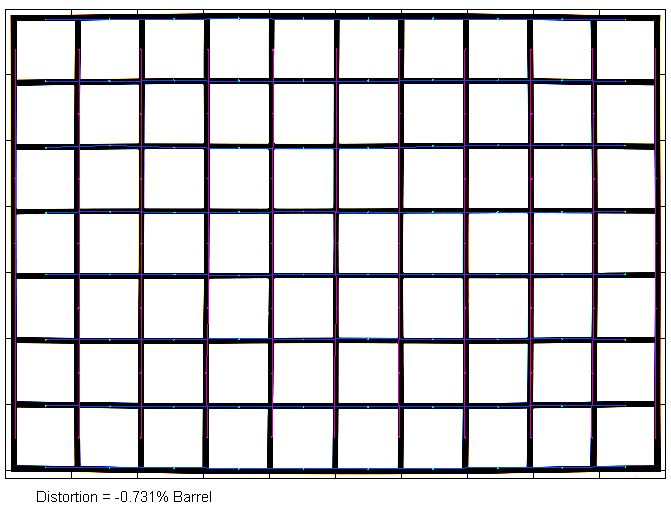
Vignetting
Vignetting is generally higher with all ultra-wide lenses (technically due to the cosine fourth law in optics) so it doesn’t come as a surprise that it is very noticeable. In RAW images, the vignetting reaches 3EV (f-stops) at f/2.8 – which is normal for such a lens. Stopping down reduces this only slightly.
Laowa did implement an autocorrection profile for vignetting. It shaves off ~1EV at f/2.8 and maintains a vignetting around the 1.6 EV mark at smaller apertures. This is still visible but acceptable (and way lower than on the 10mm f/2.8).
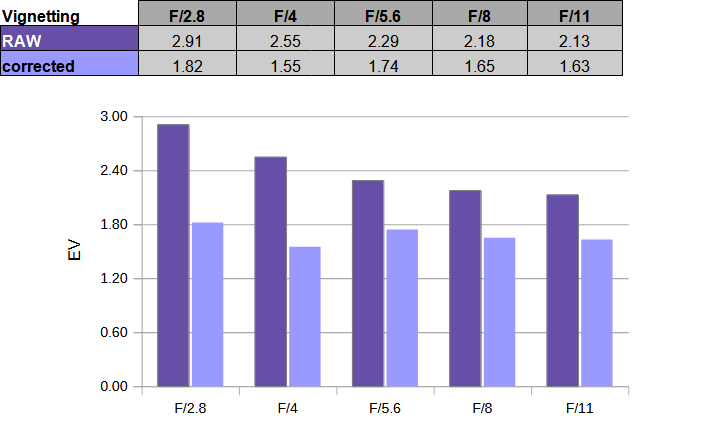
MTF (resolution) at 45 megapixels
Such ultra-wide lenses are never perfect regarding their resolution characteristic, but the Laowa AF 12mm f/2.8 FF II Zero-D does a good job overall. The center performance is downright superb at straight from f/2.8. There is a sharp drop beyond, though. The border quality is still good here, whereas the corners are acceptable, with some higher softness at the very last edge pixels (beyond the spot where we take the corner readings). Stopping down to f/4 lifts the quality across the image frame. The peak performance is reached around the f/5.6 mark with good to very good results even in the outer image field. Diffraction has a higher impact beyond f/8.
It is worth mentioning that we detected a fairly high degree of astigmatism, which affects the close-focus performance as well as the rendering of lights in night scenes.
The centering quality of the tested sample was good. The field curvature is acceptable.
Please note that the MTF results are not directly comparable across the different systems!
Below is a simplified summary of the formal findings. The chart shows line widths per picture height (LW/PH) which can be taken as a measure of sharpness. If you would like to know more about the MTF50 figures, you may check out the corresponding Imatest Explanations.
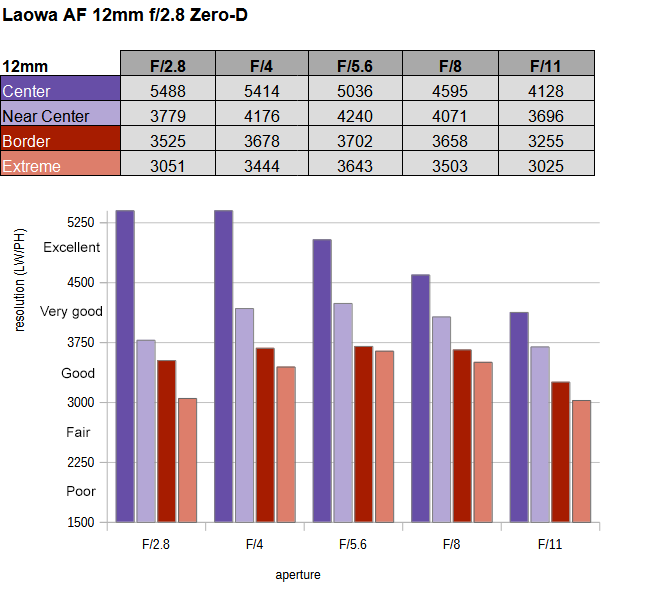
Chromatic Aberrations (CAs)
Lateral CAs are low at f/2.8 and increase somewhat the more you stop down. However, even at f/11-16, the average CA pixel width remains moderate at the image borders.
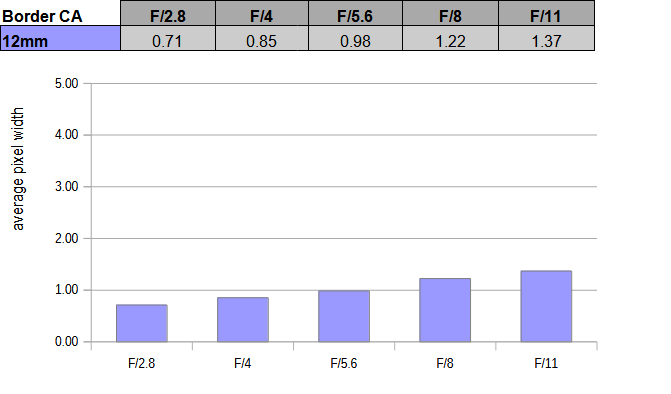
Bokeh
Ultra-wide lenses are heavily corrected using a bunch of aspherical elements – two in the case of the Laowa lens. This affects the rendering of out-of-focus highlights, which show a bit of a nervous inner substructure. However, the highlights show only a marginal outlining at f/2.8.
The AF version of the 12mm f/2.8 has “only” 5 aperture blades (14 blades in the MF version). We are perfectly fine with this – because if you want to get any degree of bokeh, you will shoot at f/2.8 anyway. However, at least technically, the highlights leave their circular shape at f/4 already, as you can see below.
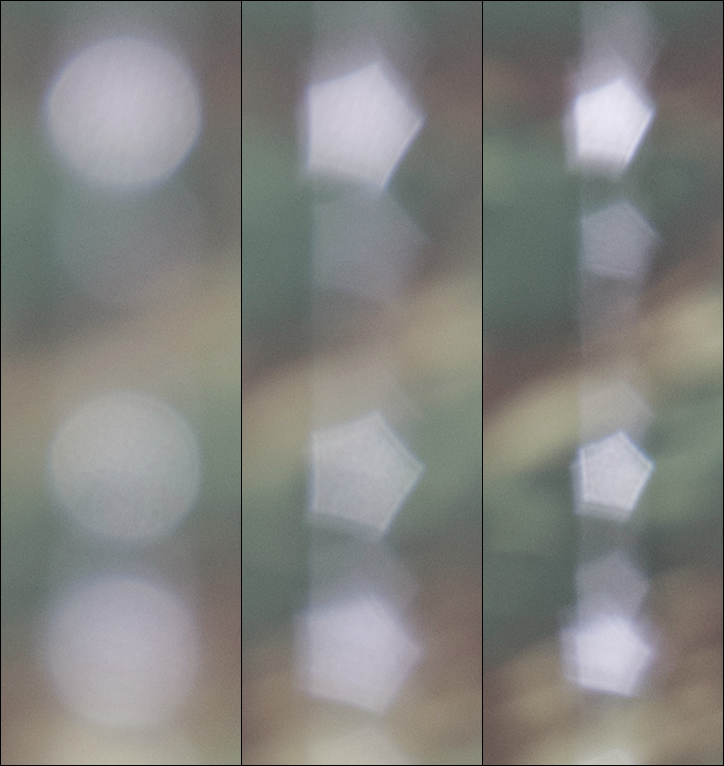
In the real world, the out-of-focus render is pretty good, though. Below is a sample crop of one of the images from the sample gallery that shows quite smooth transitions.

Sun Stars
As mentioned, the aperture mechanism uses just 5 blades in the AF version of the lens. This is actually an intentional design decision to allow for nicer “sun stars”. Sun stars are an effect at pointy light sources (e.g. streetlights) caused by diffracted (spread out) light as it passes through the blades of a lens’s aperture.
At f/2.8, we can observe the usual “blob” because the aperture is perfectly circular. However, the “stars” are already visible at f/4 due to the edgy aperture. They are nicely rendered at f/5.6 and get only better from there.
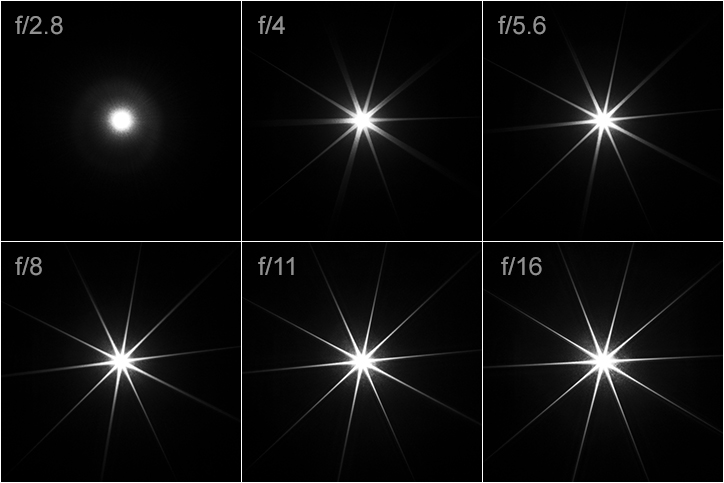
Competition
In Nikon Z mount, the Laowa AF 12mm f/2.8 FF II Zero-D faces no real competition – except maybe it’s in-house cousin – the Laowa AF 10mm f/2.8 FF II Zero D. Keep in mind that 12mm is already excessively wide and difficult to manage. The 12mm is also somewhat better. Nikon’s own lens lineup starts at 14mm at the time of this writing – and the entry hurdle for the Nikkor Z 14-28mm f/2.8 S is at $2000 USD rather than $700 …
Sample Images
No ultra-wide lens is capable of delivering perfect results on high-resolution image sensors. However, the Laowa AF 12mm f/2.8 FF II Zero-D does a pretty good job within its scope. As with most lenses of its kind, the center quality is downright superb, but it fades quickly beyond - not helped by some astigmatism. This is most obvious at f/2.8, of course. Stopping down to a medium aperture setting, the results are actually pretty sharp and that's where you'd use it the most anyway. Image distortions are minimal - by design, not because of autocorrection. The latter helps somewhat in taming vignetting, though. Lateral CAs are quite good. The quality of the bokeh is also decent for such a lens, and if sun stars are your thing, it does excel in this category. The flare resistance could be better, though.
In terms of mechanical quality, the AF 12mm f/2.8 FF II Zero-D feels great. Laowa uses an all-metal body down to the lens mount and up to the lens hood. The gunmetal finish, the texture of the focus ring with its diagonal grooves with a flattened part showing the Laowa logo are certainly stylish. The AF is decently fast and essentially noiseless. Weather-sealing has not been implemented, though.
Overall, an attractive option that doesn't cost an arm and a leg.
The Good
- Pretty sharp (for such a wide lens)
- Beautiful sunstars
- Good bokeh (for such a wide lens)
- Cool design
The Bad
- Astigmatism is on the high side
- Flare can be an issue
- No weather sealing
- Fiddly lens cap
-
Optical Quality
-
Mechanical Quality
-
Price / Performance


